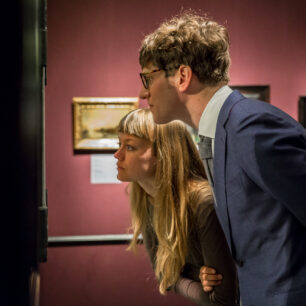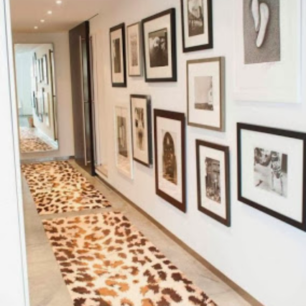
Whitewall’s Art Advisor Expert Heidi Lee-Komaromi talked with several seasoned collectors and curators to learn about their different approaches to collecting art and figured out what are the most effective methods in creating a great collection. Below is a five-step guide to help maximize the time and effort you have already put into your collection.
5 Easy Steps to Refresh and Refine Your Art Collection.
DEFINE. This may end up taking most of your time but you will experience both short and long term benefits once you define a plan of action. Take your time to identify your main area of interest and sharpen your focus on a specific theme or genre. While you may have multiple interests many collectors have found that the most efficient and effective way to collect is either in-depth by artist or medium or by genre and even historical period. Try to approach collecting as part of a whole and look for new art that compliments your existing art collection. This will help you quickly identify which works fit in and which do not. Auction house experts tend to value collections that have been thoughtfully put together and treated as a whole unit over a hodgepodge of random relics and artifacts. That said, it’s important to buy what you love while trying to follow some kind of logic.
Choosing a main interest, whether it is photography, prints, contemporary, Outsider art, or Post-Impressionist French Masters, will also help you manage the barrage of information sent by galleries and art fairs. Sub-interests are great too so long as you have a game plan. Learning to be selective by placing boundaries and staying focused helps train your eye to quickly identify works that fit your collection. Eventually it will become second nature to keep track of what works of art go well together as you develop your connoisseurship skills. You will start to experience both the short and long term benefits by simply defining a plan of action.
By constantly looking, comparing and examining materials you may soon find that you have become an expert in that field!
PLAN AHEAD. Schedule time to visit galleries, preview art auctions and attend art fairs. Many of the best art fairs and biennials recur the same time year after year and require booking flights and accommodations well in advance. While looking, don’t be afraid to ask questions and sign-up for mailing lists to receive invitations to art openings. Also, read books, join art groups or become a member of a museum to immerse yourself in art history and academia.
ORGANIZE. This is a crucial step for retaining the value of your collection. Unlike most other activities, collecting art involves a lot of maintenance after it is purchased. Negligence in caring for your art properly can adversely effect the value of the art or even damage it which defeats the purpose of collecting. Be aware of the basic maintenance requirements and costs that are involved with owning art. Some necessary precautions are getting art insurance, using a proper framer and installing a security system. Art insurance is a nominal cost compared to the protection and peace of mind you will get in return and the same goes for investing in a proper security system to guard against theft. Be sure to accurately document your art by checking the invoice to verify that everything is correct. Ask for a certificate of authentication when you purchase a work. Also, inquire about any customs requirements involved before purchasing an artwork if applicable. Collect any referrals for specialists to cover any issues regarding restoration, conservation, shipping, handling, installation and storage.
It is also advisable to develop an electronic inventory system to keep track of where your art is located and store appraisal values, exhibition history, literature, and any other information about the artwork. Remember to back it up periodically! Today there are software programs that can be easily installed. If you have an extensive collection of objects hire someone to help you if you have not done so already. It will save you more time and money to do it professionally in one fell swoop. Proper art administration can also help you track the progression and value of your art. A little organization can go a long way.
STAY CONNECTED. The art world is extremely social so you will have many opportunities to talk with other collectors, dealers or curators and develop a continuous and enriching dialogue. New scholarship comes out every year so stay current on academia by subscribing to different art publications like ArtForum, Art + Auction, and Art in America. Try to attend lectures, panel discussions, and curator’s talks whenever possible. You may be delightfully surprised to find out that one of your artists will be receiving a solo show at a gallery or even a retrospective at a major museum. In addition, loaning your art out to curators for important exhibitions is not only a nice way to share your art with the public but also can add to its exhibition history.
FINE TUNE. Now that you have a fool-proof plan of action, at the top of the pyramid is fine tuning. Art collections always need spring cleaning from time to time because artists constantly change and evolve and so do your interests. An advisor can be a good buffer when looking for works that are one-offs, impulse buys, or tangential to your main focus. Then, decide on how you want to dispose the art whether it be through auction, private sale or charitable gift to a local institution. By having an art collection that is focused, well-researched and organized, you can increase its academic and aesthetic appeal as well as its overall value. Before you know it you will have created a consistent and focused collection of art that is admired and respected by connoisseurs around the world.
Questions? Email me at Heidi@hlkartgroup.com












